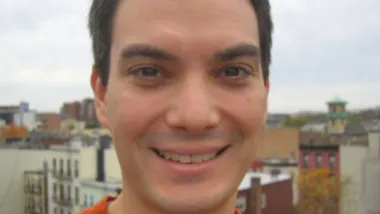There's a lot of babbling on in this blog about how streets are public space, that they are for people, and that they should be designed equitably for everyone.
The driving public, after decades of being shown images on television and in print that owning a car makes you better/cooler/[add other socially positive superlatives here] than everyone else, can express outrage at the thought that planners might think of taking away "their streets". Quite irrational I think, because if you plunk down tens of thousands of dollars for such a fancy machine, you'd think there would be a modicum of satisfaction knowing that roadway congestion equates to more quality time spent with man's most prized material possession, no? Nonetheless, the pursuit of a rational urban roadway network is worth the struggle, and we must march forward.
The question I put forth here is, essentially, how much is too much? In pure city-grid fashion Hoboken, we have been regularly encountering development opportunities where closures of street segments have been on the table. The reasons for these closures vary from underpass clearance issues to the creation of small public spaces/parks/plazas, etc. The arguments for and against roadway closures are both valid:
For: Eliminates through-traffic in neighborhoods streets/properly redirects through-traffic to arterials; provides opportunities for new public spaces in a dense environment with little available free land; adds more interesting locations throughout the city; increases opportunities for social interactions; more fairly uses limited public space for a broader range of residents.
Against: Disrupts the flexibility (takes away options) and distribution of traffic in the grid; unfairly redistributes traffic volumes onto other neighboring streets; adds to motorist confusion; fear of adding to congestion on other streets (although this is largely disproved time and again in examples worldwide); takes away on-street parking.
Not all of these are true or valid for every situation, but they are the common arguments. In an entirely philosophical complete streets debate, one might argue that eliminating vehicular use on any street makes that street incomplete. A counter argument to this could be that, looking at the city as a whole, just as some streets are, where appropriate, designed exclusively for cars (tunnels, highway ramps, etc.), other streets are justified, where appropriate, to be designed exclusive of cars.
Professionally, the industry makes the case both ways, and I'm not sure there is consensus on where and when one way or the other applies. There are clearly camps on both ends of the spectrum that lean heavily towards a steadfast policy, but the rest of us fall somewhere in the middle and the answer, as is often the case, is not so immediately evident. What say ye?

Planetizen Federal Action Tracker
A weekly monitor of how Trump’s orders and actions are impacting planners and planning in America.

Chicago’s Ghost Rails
Just beneath the surface of the modern city lie the remnants of its expansive early 20th-century streetcar system.

Amtrak Cutting Jobs, Funding to High-Speed Rail
The agency plans to cut 10 percent of its workforce and has confirmed it will not fund new high-speed rail projects.

Ohio Forces Data Centers to Prepay for Power
Utilities are calling on states to hold data center operators responsible for new energy demands to prevent leaving consumers on the hook for their bills.

MARTA CEO Steps Down Amid Citizenship Concerns
MARTA’s board announced Thursday that its chief, who is from Canada, is resigning due to questions about his immigration status.

Silicon Valley ‘Bike Superhighway’ Awarded $14M State Grant
A Caltrans grant brings the 10-mile Central Bikeway project connecting Santa Clara and East San Jose closer to fruition.
Urban Design for Planners 1: Software Tools
This six-course series explores essential urban design concepts using open source software and equips planners with the tools they need to participate fully in the urban design process.
Planning for Universal Design
Learn the tools for implementing Universal Design in planning regulations.
Caltrans
City of Fort Worth
Mpact (founded as Rail~Volution)
City of Camden Redevelopment Agency
City of Astoria
City of Portland
City of Laramie






























